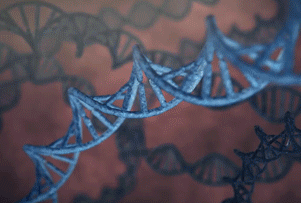UVC-LED LIGHTING SOLUTIONS
UVC Sterilization--- What is UVC light ?
Ultraviolet light is a kind of light wave invisible to the naked eye and exists on the outer side of the ultraviolet end of the spectrum, so it is called ultraviolet, it is a kind of light wave, according to different wavelength ranges, according to the wavelength, ultraviolet (Ultra Violet, UV) light is usually divided into UVA (315nm-400nm), UVB (280nm-315nm), UVC (100nm- 280nm).

UVC wavelength 100 to 275nm, also known as short-wave sterilization UVC. It is very close to the peak wavelength (265nm) of the sterilization efficiency curve, so when 253.7nm radiation reaches a certain value, it can kill germs such as intestinal pathogens, Aspergillus flavus and HBsAg (hepatitis B surface antigen) in a relatively short period of time. Germicidal UVC lamps emit UVC short-wave ultraviolet light.
UVB wavelength 280 to 315nm, also known as medium-wave erythema effect ultraviolet light, mainly used in health, aging test, spectral analysis, UVB ultraviolet light on the human body with erythema effect, can promote the body's mineral metabolism and vitamin D formation, but long-term or excessive exposure will make the appearance of tanning, and cause redness and peeling. Exterior disease phototherapy tube, UVB keep healthy lamp, plant growth lamp issued is the use of special translucent purple glass (not through the light below 254nm) and the peak near 300nm phosphor made.
UVA wavelength 315 to 400nm, its central value in 365nm, commonly used in industrial glue curing, tungsten ore identification, fluorescence detection, biological polymerization, oil detection, ore exploration, criminal detective, textile industry, archaeology, health, stage, nightclubs, theaters and signal lighting.
UVC Sterilization--- How do UVC devices work ?
As evident by multiple research studies and reports, when biological organisms are exposed to deep UV light in the range of 200 nm to 300 nm it is absorbed by DNA, RNA, and proteins.
Absorption by proteins can lead to rupture of cell walls and death of the organism. Absorption by DNA or RNA (specifically by thymine bases) is known to cause inactivation of the DNA or RNA double helix strands through the formation of thymine dimers. If enough of these dimers are created in DNA, the DNA replication process is disrupted, and the cell cannot replicate.
It is widely accepted that it is not necessary to kill pathogens with UV light, but rather apply enough UV light to prevent the organism from replicating.
Generally, in bacteria, a number of different repair mechanisms have evolved to repair these UV-induced lesions.
As a result, the strategy in UV disinfection has been to provide a sufficiently high dosage to ensure that nucleic acid is damaged beyond repair.

UV Dose is the amount of UV radiation a microbe is exposed to and depends on the intensity of UV radiation and exposure time.
UVC radiation flux calculation method:
Germicidal effect of germicidal UVC depends on the intensity of light (illumination) and the accumulation of light exposure time (cumulative light or UV exposure) that is: radiation flux = irradiance * exposure time.

Effective Dose
(μJ/c㎡)

Intensity
(μW/c㎡)

Time
(seconds)
UVC Sterilization--- What are the characteristics of UV-LEDs ?
* High efficiency - A certain dose of UV light from a deep UV-LEDs can destroy the DNA replication process of an organism in a few seconds or less.
* Energy saving, long life, low maintenance cost - deep UV LED power consumption is low, very energy efficient, deep UV LED power is about one tenth of the mercury lamp, this ratio greatly saves costs.
* Small size, flexible design, easy installation - deep UVC LED devices, small size, its germicidal device design flexibility, can be applied in the traditional UV mercury lamp can not be applied to small spaces.
* Different from traditional UV mercury lamp - Deep UV-LED lamps do not contain heavy metal elements such as mercury, unlike traditional UV mercury lamps. Also, It do not generate ozone that is irritating to the respiratory tract when inhaled by humans.
* UVC is harmful to humans. Do not look directly at or irradiate the skin.
Also, please pay attention to the leakage and reflected light of UVC when using it.
And UVC can degrade certain materials, such as plastic, polymers, and dyed textile.
Please note the usage time.













UVC Sterilization--- Where are UVC-LED products used ?
With its many advantages, UVC-LED products are gradually recognized in the market and are increasingly active around people, such as have been initially applied to water treatment, air sterilization, food preservation and other fields. For example: water purifiers, refrigerators, sterilization boxes, vending machines, etc.
We believe that UVC-LEDs light will be applied to more fields and involved in every aspect of people's life.
Believe in KENDY, believe your choices.





